Have you ever wondered what it takes to create the ideal garden oasis for your asparagus plants? It’s all about finding the perfect companion plants! The flowerbed can be made even more beautiful if you combine seasonal flowers with the hardy and nutrient-rich asparagus. In this blog post, we’ll cover everything you need to know about choosing the right companion plants for asparagus. From species to positioning, get ready to discover all the secrets of creating a perfect garden paradise for your asparagus!
What Is Companion Planting?
Companion planting is the practice of growing different plants in close proximity to each other. This creates companion plant relationships that can benefit one or both of the plants involved. In asparagus companion planting, for example, certain plants help to repel pests and diseases from the asparagus bed while others provide nutrients to make it thrive.
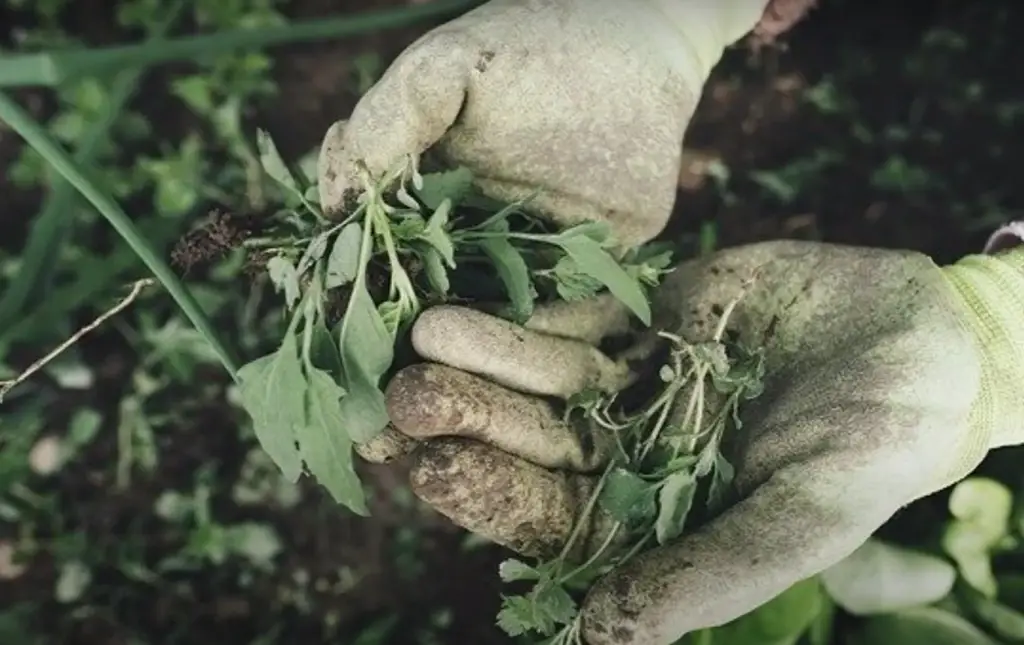
Companion planting is an effective way to naturally improve soil fertility and pest control when growing asparagus. It also helps increase yields by attracting beneficial insects such as predatory wasps and hoverflies which feed on harmful pests that would otherwise damage the crop. Additionally, companion planting can help smother weeds by creating a dense canopy over the asparagus bed.
Asparagus Companion Plants
One of the most popular vegetables, asparagus is a delicious addition to any meal. But what many people don’t know is that companion planting can help maximize the growth and production of asparagus in your garden. Companion planting involves strategically placing certain plants near each other to create a symbiotic environment where all plants benefit from one another. In this guide, we’ll discuss some of the best companion plants for asparagus and provide helpful tips on how to implement them in your garden.
Fruits and Vegetables to Plant with Asparagus
Planting fruits and vegetables with asparagus is a great way to get the most out of your garden space. Companions such as tomatoes, peppers, cucumbers, melons, squash, and pumpkins will help balance nutrients in the soil while providing plenty of delicious edibles for you and your family. Planting these crops also helps ward off pests that may otherwise bother your asparagus plants. On the other hand, companion planting with fruit trees like apples or pears can add extra shade to keep your asparagus cool during the hot summer months.
Beets
Beets (Beta vulgaris) are an excellent companion for asparagus. Not only do they help to improve the nutrient-rich soil in which your asparagus is grown, beets also act as a natural pest repellent. The root system of beets helps to loosen and aerate the soil, allowing better water drainage and airflow. Be sure to give them plenty of room when planting – unlike some other vegetable varieties, beets need more space so they can properly grow their large, round roots.
Eggplants
Eggplants make great companion plants for asparagus because they coexist well, without either one dominating the other. Planting them next to each other helps both crops thrive and produce a higher yield. Eggplants also act as natural insect repellents, which can help protect your asparagus from pests.

You can also use eggplant leaves or plantings around your asparagus beds to provide shading and conserve moisture during the hot summer months. Be sure to keep an eye out for early signs of diseases, such as aphids and fungal infections, so that you can take corrective action quickly if needed. For best results, fertilize eggplants and asparagus separately during the growing season. With a little extra care, you’ll be rewarded with a healthy harvest of both eggplants and asparagus!
Tomatoes
Like Eggplants, tomatoes are an excellent companion plant for asparagus. Tomatoes provide nitrogen to the soil which helps promote healthy growth in both crops. Planting the two side by side can also increase yields since they will use up any excess nutrients that one crop is not able to absorb. As with eggplants, tomatoes act as natural insect repellents so keep an eye out for early signs of pests such as aphids or fungal infections. Also make sure to fertilize each crop separately during the growing season for best results. With proper care and maintenance, you should have no trouble harvesting a plentiful crop of both tomatoes and asparagus!
Grapes
Grapes do very well when planted next to asparagus, offering natural shade and protection from other plants. This allows the asparagus to get more sunlight exposure since it will not be competing for light with nearby plants. Grapes also provide essential nutrients in the soil that helps the asparagus grow better. Additionally, grapes produce an abundance of delicious fruit that can be harvested for use or eaten fresh! When planting grapes near your asparagus bed, make sure to keep them away from any other vegetables and herbs since they can compete for resources and affect their growth. Also, it’s important to prune regularly so that the grape vines don’t overwhelm your garden space. Lastly, remember to water your grapes regularly so that they stay healthy and happy!
Horseradish
Horseradish is a great companion to asparagus. Not only does it repel harmful pests, but the two plants also work together to improve soil fertility. Horseradish also helps promote strong root growth in asparagus plants, making them more resilient and hardy. The best way to plant horseradish next to asparagus is to dig a shallow trench near the base of the asparagus bed and add some compost before planting the horseradish roots. Keep in mind that horseradish will spread quickly so be sure to give it plenty of room!
Lettuce
Lettuce is an ideal companion plant for asparagus because it provides the same conditions that asparagus needs in order to thrive. Lettuce can help increase the amount of nitrogen in the soil, while its shallow roots allow it to grow close enough to the asparagus without competing for nutrients and water. It also provides a nice ground cover to keep down weeds near your asparagus plants. The leaves of lettuce are also edible which makes it a great addition to your garden!
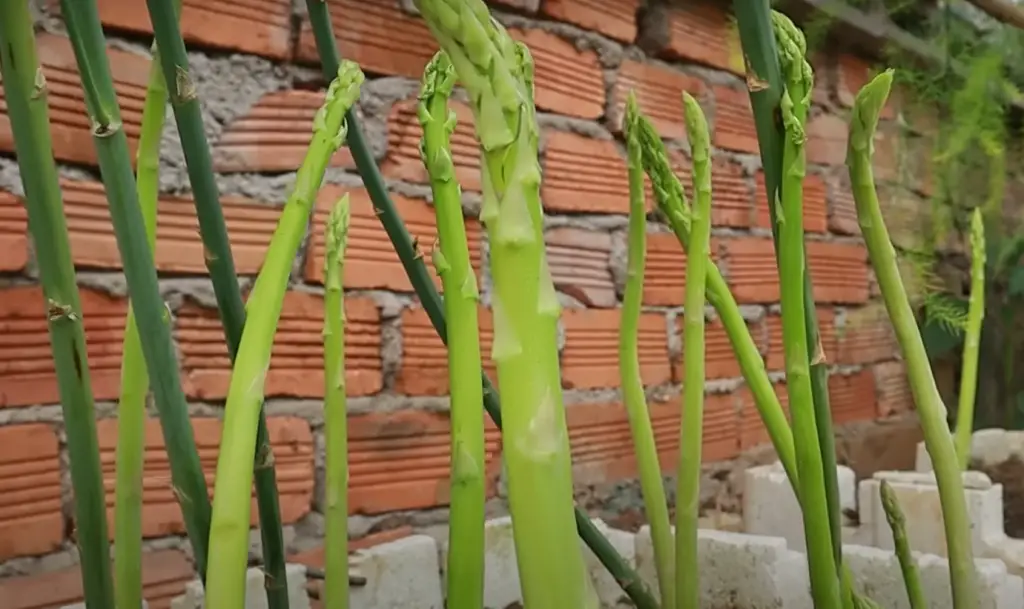
Be sure not to overcrowd the area or you may end up with wilted lettuce before you can harvest it. If you’re looking for something different, try planting romaine or leaf varieties instead of head lettuce – they take up much less space in the garden. You can also use lettuce as a shade cover for your asparagus during hot summer months, to keep them from drying out too quickly. Enjoy the delicious harvest of both your lettuce and asparagus this season!
Spinach
Spinach is a great companion plant for asparagus, as they both thrive in the same environment and soil pH. Planting spinach next to your asparagus will help ensure that there is enough nitrogen in the soil for both plants. Spinach also helps repel pests that may otherwise attack your asparagus harvest. While it should not be planted right next to your asparagus, it can be planted nearby with plenty of space between them. Make sure you water both plants evenly and regularly for the best results. Additionally, do not pluck any spinach leaves until after your asparagus harvest has finished – this will help keep the nutrients in the soil where they are needed most!
Rhubarb
Rhubarb is a great companion plant for asparagus. It’s an attractive and edible perennial vegetable that can be used in many recipes and will enhance the look of your home garden. This root vegetable has been around since Medieval times, and it’s known to help the growth of other plants. Its large leaves provide shade for asparagus stems and create an environment conducive to their growth. Rhubarb also helps keep weeds away from the bed, giving asparagus more room to stretch its roots deep into the soil. Planting rhubarb close by also increases fertility, making sure your vegetable patch stays productive over time. However, beware – don’t allow any rhubarb leaves to touch the ground, as this can have a negative effect on the growth of your asparagus.
Strawberries
Strawberries are an excellent companion plant for asparagus. The combination of the two plants can create a beautiful and productive garden. Strawberries will benefit from the extra nitrogen that is provided by the asparagus, while asparagus will benefit from better air circulation thanks to the shade created by the strawberry’s spreading foliage. In addition, strawberries can also help deter some pests from your asparagus patch. When planting, make sure to space out both plants evenly so they have enough room to grow. Be sure to also keep a check on the soil pH levels.
If you find that your soil is too acidic, you can add some lime to help balance it out. With proper maintenance and care, this dynamic duo will be sure to thrive in your garden!Flowers to Plant Near Asparagus
Asparagus is a popular plant choice for many home gardeners, so it makes sense to want to fill your garden with beautiful flowers.

Luckily, there are plenty of great options when looking for companion plants for asparagus. Here are some of our favorites.
Marigolds
Marigolds are a great companion for asparagus. Not only do they add a nice burst of color to your garden, but they can also help protect asparagus from root nematodes. Marigolds release an allelopathic compound that is toxic to some species of nematode, thus keeping them away from the roots of asparagus plants. In addition, marigolds act as a natural form of pest control by attracting beneficial insects such as ladybugs and lacewings which feed on pests that can harm your asparagus crop. Furthermore, marigolds’ deep roots can act as a barrier and keep weeds away from the crowns and stems of the asparagus plants. For best results, plant marigolds near the asparagus bed.
Nasturtiums
Nasturtiums are another great companion for asparagus. They help to attract beneficial insects such as lacewings and ladybugs, which in turn can help to keep pests away from your garden. Additionally, they act as a trap crop by drawing aphids away from other plants in the area. Nasturtiums also release an allelopathic compound that can repel some species of nematode, thus helping to protect the roots of your asparagus plants. For best results, plant nasturtiums around the perimeter of your asparagus bed.
Other Asters
Asters are classic garden flowers and come in many different species. While they may not be the most attractive companion for asparagus, they can provide some benefits to your crop. Asters have been known to attract beneficial insects such as lacewings and ladybugs which help control pests on crops. They also help build soil structure with their deep roots, adding much-needed organic material to the soil around asparagus plants. Planting asters near your asparagus can provide other advantages too, including providing ground cover between patches of your crop to reduce weeds, and giving off a sweet smell that will make harvesting easier for you! Finally, asters bloom in late summer and into fall so they’ll add extra color to your garden when asparagus is done for the year.
Petunias
Petunias are a classic companion for Asparagus. They have bright flowers that attract beneficial insects, helping to keep pests away from your Asparagus plants. Petunias also add beautiful color to the garden and they’re easy to care for – just make sure you water them regularly!
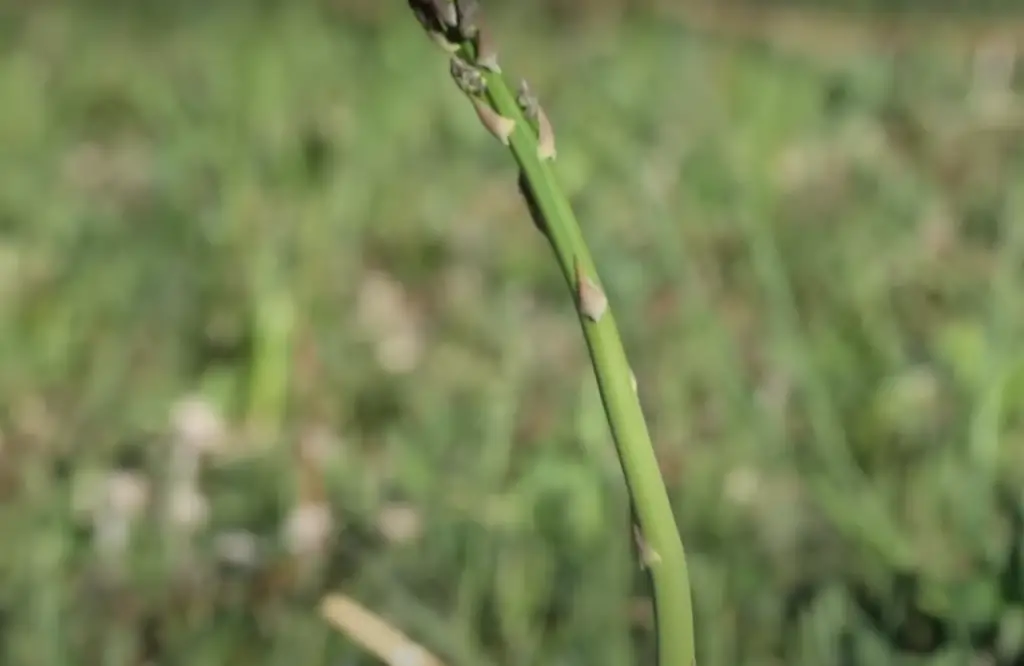
Plant Petunias around the perimeter of your bed or container of Asparagus plants for extra protection against diseases and insect problems. For even more protection, intersperse petunia seedlings between your asparagus plants. This will help attract helpful bugs into the mix while keeping out any harmful ones.
Herbs to Plant Near Asparagus
Herbs are an excellent choice for companion plants when it comes to growing asparagus. Not only do they provide additional nutrients and flavor to your soil, but they also act as natural pest repellents.
Basil
Basil is a very popular companion plant for asparagus, especially when planted in the same planter or garden bed. Basil has antifungal properties that can help protect the asparagus from disease and pests, while also adding flavor to fresh-picked spears. Additionally, basil is great for attracting pollinators such as bees and butterflies, which helps promote healthier plants over time. When planting basil with asparagus, be sure to space them out enough so that they don’t overcrowd each other and stunt their growth. Finally, you should remember to pinch off any flowers on the basil plant; this will ensure it doesn’t go to seed and focus its energy instead on promoting healthy foliage!
Cilantro
Cilantro is one of the most popular companion plants for asparagus. Not only does it keep aphids and other pests away, but its aroma can also help to mask some of the unpleasant smells that can sometimes accompany asparagus. It’s a great way to add an extra level of flavor and interest to your garden. Plant cilantro around the edge of your asparagus patch to keep out unwanted insects while still allowing bees and other beneficial pollinators in. Just make sure not to let it take over too much space, as it can become invasive if left unchecked! To get the best results from cilantro, plant seeds or young plants after the last frost date and provide regular water during dry spells. Be ready to harvest the leaves when they are still young and tender for a delicious flavor.
Comfrey
Comfrey is a perfect companion for Asparagus. It is packed with nutrients and can have many beneficial effects on your soil. It’s also known as ‘Bocking 14’ or ‘Russian Comfrey’, and it helps to improve fertility in the soil over time as it breaks down. It is easy to grow and can be used as a natural fertilizer when applied directly to plants or mixed into the soil around them. Comfrey has medicinal properties too, which makes it a perfect addition to an herb garden if you want to try growing some of your own herbs alongside your Asparagus! However, take care not to let it spread too much – its roots are very deep and they can choke out other plants you may have. If this happens, simply dig it up and replant in an isolated area of your garden. Enjoy the benefits from Comfrey and happy Asparagus growing!
Dill
Dill is known to be a great companion plant for asparagus. It helps in boosting the plant’s growth and also improves the flavor of the vegetable. Dill grows best when it is planted near asparagus beds since they both enjoy similar growing conditions. In addition, it can provide some shelter from intense sunlight and shade during hot days. Moreover, dill has been found to repel certain types of pests that may otherwise cause damage to your asparagus plants.
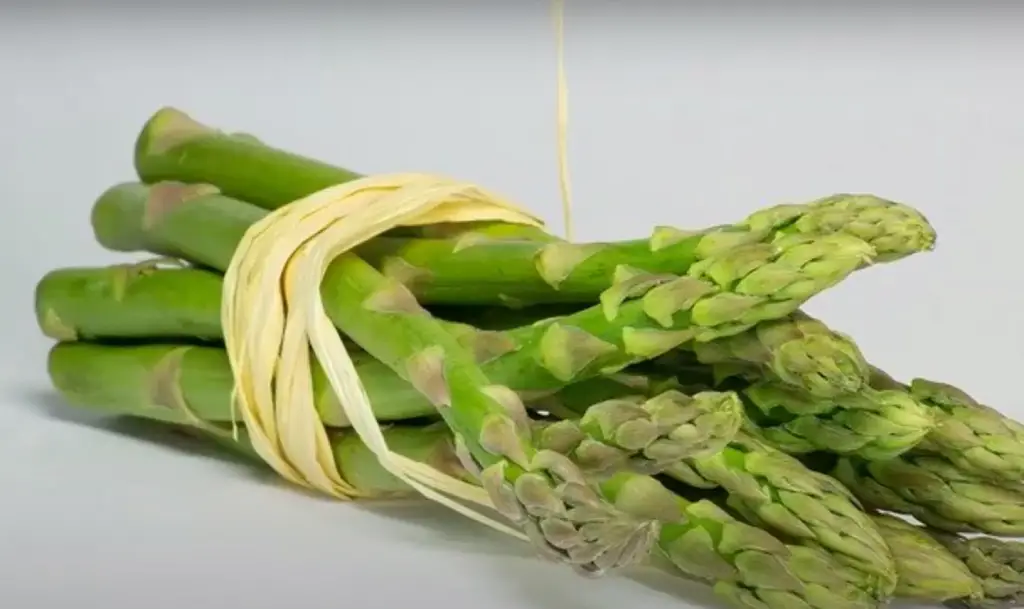
That being said, it is important to keep an eye on how much space you give dill since too much of it can overcrowd your asparagus patch and choke out its growth. Additionally, make sure not to plant nearby vegetables like onions or garlic as they can stunt the growth of dill. Finally, be sure to harvest your dill before it goes to seed if you want to maximize its benefits for your asparagus patch.
Oregano
Oregano is a fragrant herb that can make a great companion to your asparagus plants. It helps deter some of the common pests and diseases that affect asparagus, while also bringing in beneficial pollinators like bees. Oregano also has a strong root system that will help aerate the soil around your asparagus patch without competing for nutrients or water. Plant oregano in full sun for best results, but it’s also fairly drought tolerant so you don’t have to worry about providing too much extra moisture. Plus, it’s easy to harvest and use in cooking! So why not add some oregano next to your asparagus bed? You won’t regret it!
Parsley
Parsley is a popular choice when it comes to companion planting for asparagus. This herb has many benefits in the garden such as repelling bad insects and enhancing the flavor of neighboring crops. Parsley also helps to improve soil fertility by providing nitrogen, potassium, and phosphorus for your Asparagus plants. Planting parsley near asparagus can help keep various pests away from your crop while providing important nutrients at the same time. To get the most out of this plant, we recommend planting it about 12 inches away from your asparagus bed. Additionally, you should be sure to harvest some parsley regularly to prevent overcrowding and allow for better air circulation in your garden.
Sage
Sage is a great companion for Asparagus because it helps to deter pests and improve soil fertility. Plant sage near your asparagus plants, or even better, interplant them. Sage also has multiple culinary uses, so you can enjoy its flavor while protecting your asparagus from damage. Just keep an eye on sage’s growth; it can become quite invasive if left unchecked. Prune regularly and harvest often to make sure the plant stays in check! For best results, choose from various cultivars such as ‘Pineapple’, ‘Tricolor’, and ‘Purpureum’. They have different colored foliage that will provide beautiful texture in your garden bed!
Thyme
Thyme is a great companion plant for Asparagus, as it has many benefits. It helps to repel some common garden pests like beetles and ants, and it also attracts bees that help with pollination.
This helps to control the growth of weeds and improves soil structure. Planting Thyme around your Asparagus bed will help give the roots plenty of room to spread out and thrive. If you’re looking for an easy herb to add flavor to dishes featuring Asparagus, look no further than Thyme! It adds a subtle sweetness that pairs well with this vegetable’s freshness. Try adding it to roasted or grilled recipes for a delicious flavor combination.Plants to Avoid Growing With Asparagus
Not all plants are suitable companions for asparagus. Certain varieties can prove to be detrimental to the growth and health of your asparagus crop, so it’s important to be aware of these before planting them next to each other. Plants that should never be planted nearby include.
Carrots
Carrots are extremely susceptible to the same foliar diseases as asparagus, which can cause both of them to become affected. Carrot root fly can also be attracted to nearby asparagus plants.
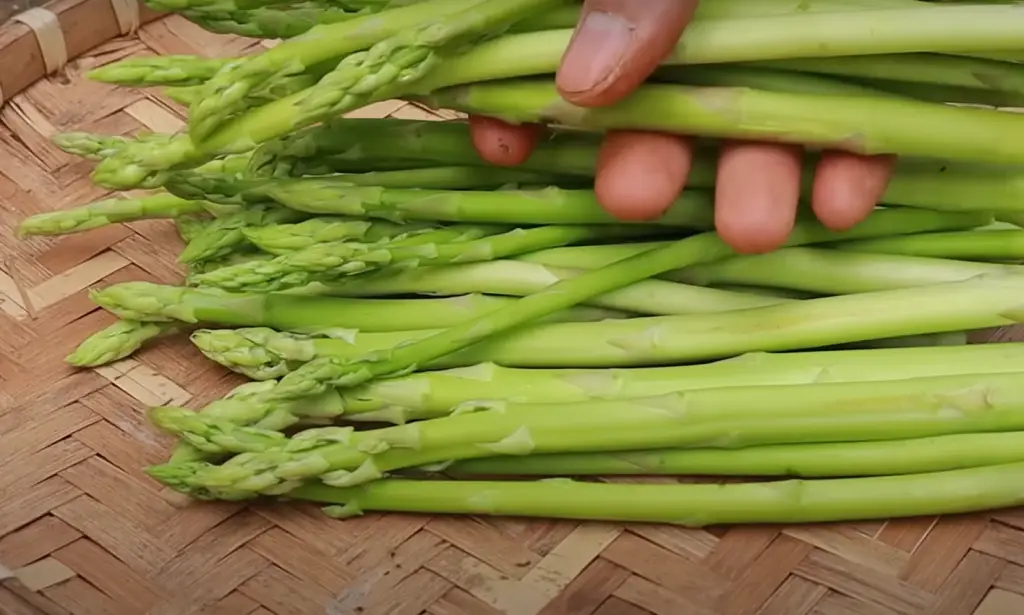
To ensure your carrots and asparagus don’t suffer from these issues, keep them planted in separate areas.
Alliums
Alliums, such as garlic and onions, should be avoided when planting asparagus. These vegetables are prone to the same pests that attack other members of the allium family, so they’re likely to spread any diseases or pest attacks between them. Planting them in separate areas will help keep your vegetables healthy.
Potatoes
Potatoes are also not suitable for growing with asparagus. The potato beetle is known to feed on both plants, which can cause them both to become stunted and unhealthy. In order to keep your potatoes and asparagus healthy, it’s best to keep them planted in separate areas of the garden. [1]
By being aware of the plants that should never be planted together with asparagus, you can help ensure a successful crop each season!
FAQ
What is the best companion plant for asparagus?
The best companion plant for asparagus is marigolds. Marigolds are great at repelling bothersome insects such as aphids and beetles, which can damage the delicate asparagus stalks. Furthermore, they also attract beneficial insects like hoverflies and lacewings that prey on the bad ones and help protect your crop from infestations. Planting marigolds near your asparagus bed ensures a healthy harvest in the long run! [2]
What else can you grow in an asparagus bed?
When it comes to companion planting for asparagus, there are several other plants that will benefit from growing alongside your asparagus. Herbs such as basil, chives, and mint can do a great job of repelling pests while adding flavor to your dishes. Nasturtiums act as an all-natural pest control while providing bright flowers and edible leaves, making them a beneficial addition to any garden. Planting marigolds with your asparagus is also beneficial, as they help ward off harmful nematodes while adding some extra color to the bed. Lastly, tomatoes grown near your asparagus will provide additional nutrients that both plants can absorb from the soil. [3]
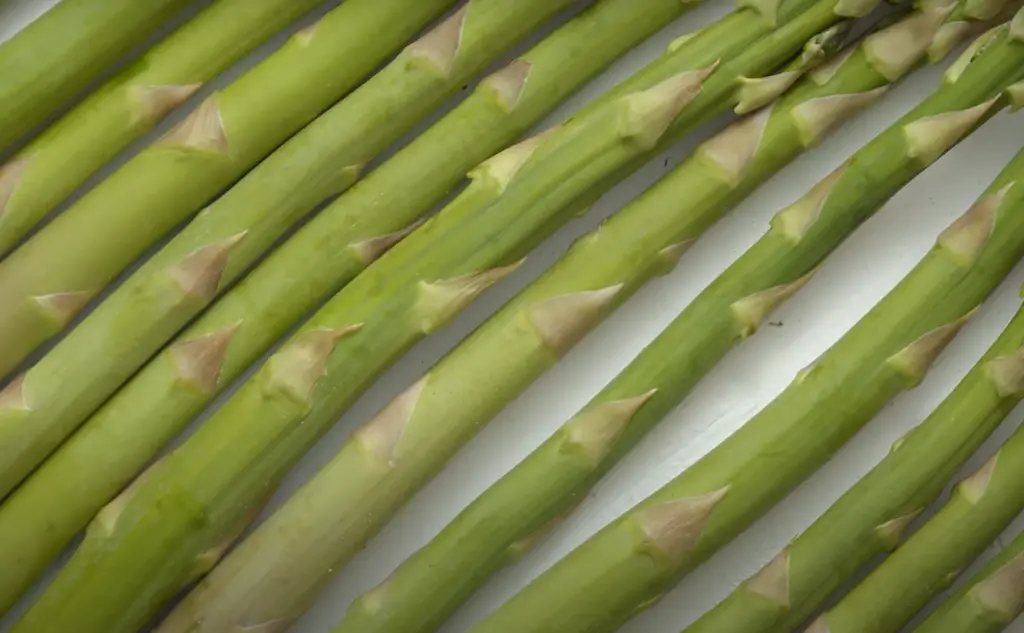
No matter what else you choose to plant in your asparagus bed, it’s important to remember that asparagus should always be given the most room and sunlight. By giving it appropriate space and attention, you can ensure that it will thrive alongside its companion plants for many years to come!
Can you plant broccoli and asparagus together?
For best results when planting broccoli and asparagus together, it is advised to grow them in distinct rows or sections of the garden bed. This is because broccoli has a longer maturity date than asparagus, which can lead to one species taking over the other.
Additionally, broccoli should be planted in early spring while asparagus should be planted in late spring for optimal growth. [4]What should I fertilize asparagus with?
The good news is that you don’t have to do much when it comes to fertilizing your asparagus bed – in fact, over-fertilizing can be detrimental! Asparagus plants are known for their ability to fix nitrogen from the atmosphere, so all they really need is a little boost every now and then. A balanced fertilizer like 10-10-10 works well, but make sure you follow the instructions on the label. Additionally, adding a layer of compost or aged manure around your plants is always beneficial. This will help provide additional nutrition and encourage healthy growth.
Useful Video: companion planting asparagus
Conclusion
After reading this guide, we hope you have gained a better understanding of companion plants for asparagus. Knowing which companions to choose and how to plant them correctly can help make your garden truly thrive. Planting the right companion plants around asparagus can reduce pest infestations, encourage beneficial insects, and boost soil fertility, resulting in bigger harvests over time. With careful planning and research, you will be able to find the best combination of companion plants that will best benefit your asparagus crop and garden overall. Happy planting!
References:
- https://hereinthecatskills.com/asparagus-companion-plants/
- https://thehomesteadingrd.com/asparagus-companion-plants/
- https://www.masterclass.com/articles/asparagus-companion-planting-guide
- https://shuncy.com/article/growing-broccoli-and-asparagus










Leave a Reply
View Comments